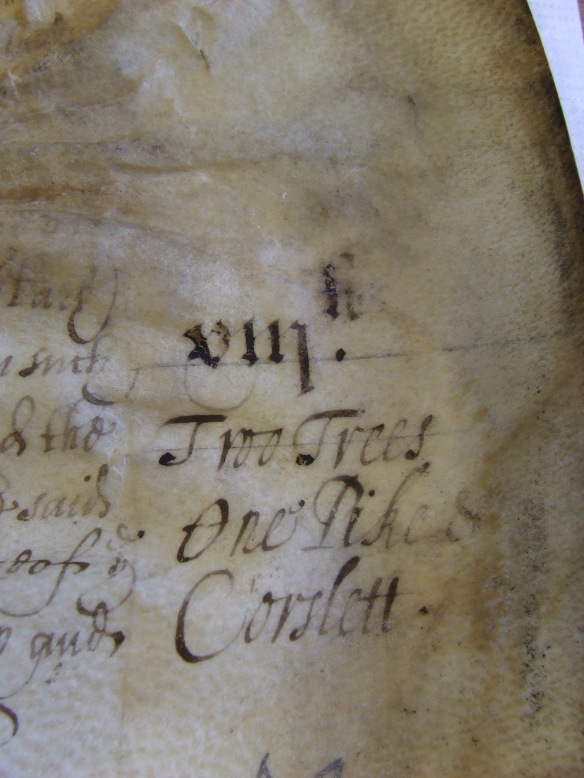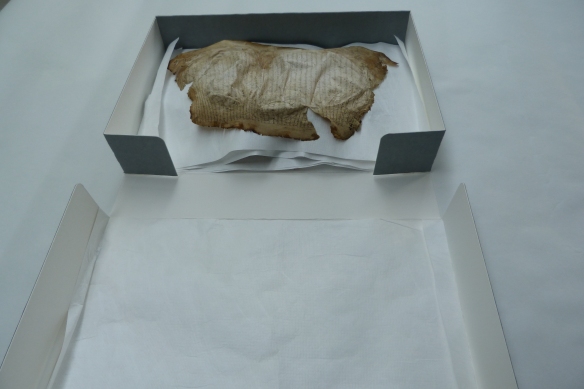Now that the conservation work is completed, we have begun the transcription and encoding of the folios. We are beginning with the six folios on the Goldsmiths’ proportion and will use these to plan out the website and the particulars of the encoding into XML using TEI. But first they have to be transcribed!
The text itself is formulaic, which means that it is usually possible to fill in the text missing from those areas that are illegible, burnt, shrunken, torn, or covered in dirt. This also means that the transcription involves much rereading of the folios to fill in the gaps, but it is very satisfying to have a complete transcription.
Whilst the text itself is in English, there are lots of varieties in the spelling (for example, the use of ‘howse’, ‘fower’, ‘cabbyns’) so we are going to include a modernised transcription on the website, with modernised spelling, punctuation, and names (as far as is possible). We also plan for the website to include a glossary of terms that may be unknown or not immediately obvious to the reader, such as ‘quicksett’ and ‘fireboot’. The place names present extra challenges as some of the names mentioned correspond to current Northern Irish place names, but some of them do not. In addition, there is no guarantee that the 1639 boundaries of places such as townlands and counties correspond to the modern ones. Fortunately, the script itself is a large, neat, clear, secretary hand, and this makes the transcription a little easier.





